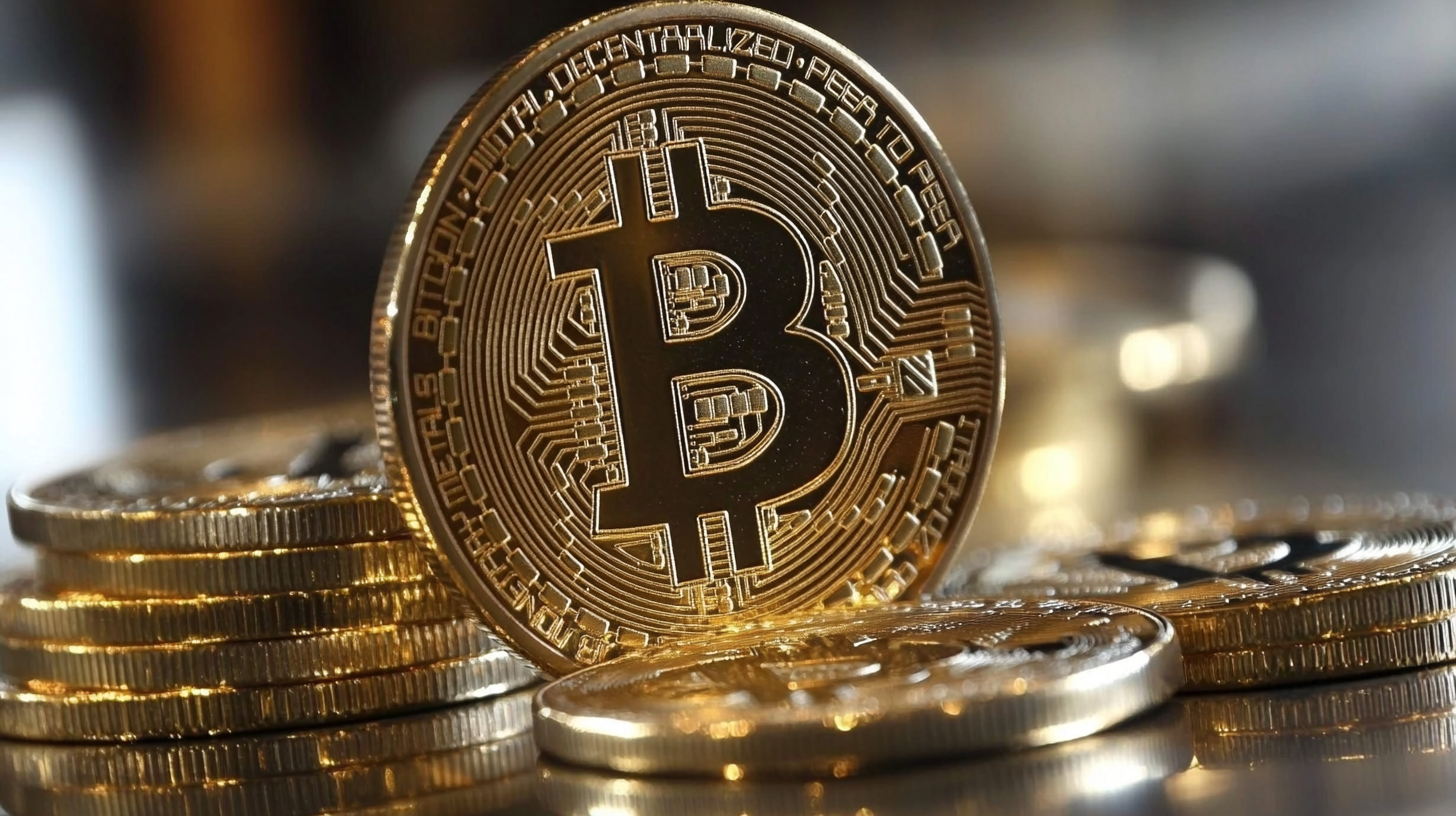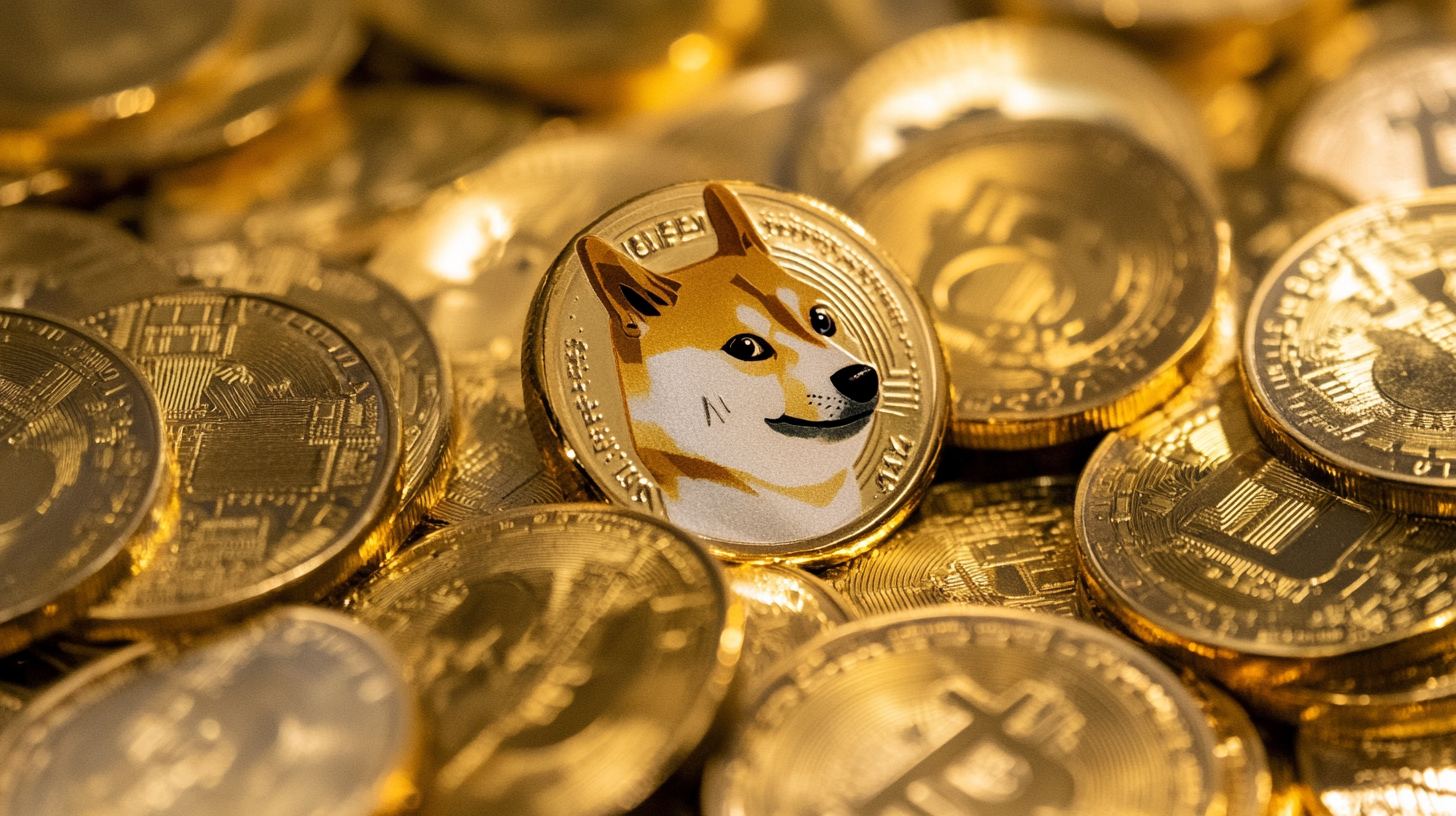Digital Assets
5 Fair Launch Coins
Securities.io is not an investment adviser, and this does not constitute investment advice, financial advice, or trading advice. Securities.io does not recommend that any security should be bought, sold, or held by you. Conduct your own due diligence and consult a financial adviser before making any investment decisions.

Cryptocurrency was born with the promise of democratizing access to financial opportunities, just like the internet democratized information. By using open, decentralized, and permissionless blockchain technology, cryptocurrency projects eliminate intermediaries and level the playing field.
The idea is to bypass the restrictions imposed by traditional financial institutions and offer anyone with an internet connection and device access to crypto's varied opportunities and financial freedom.
While blockchain technology and crypto made this happen with a “fair launch,” it's not as widely adopted. In fact, swatches of decentralized networks are reserved for founders and early investors. From whitelists and pre-mines to venture capital (VC) allocations, practices like these benefit a few and rig the market against the general population.
For instance, Initial Coin Offering (ICOs) in 2017 emerged with the promise of egalitarianism only to be exploited by private funds.
The market turned to meme coins this season to fight against the backroom dealings between projects and VCs, who would dump the coins on retail in the open market at a much higher valuation than the heavily discounted rates they get them for.
But it didn't take long for so-called influencers to take advantage of meme coins' promise of open access and easy profits. By using their followers on social media as exit liquidity, influencers, and celebrities have now, too, more or less killed this new trend.
Despite this, the potential of a fair launch can't be dismissed. What does fair launch really mean, though? Fair launch means giving everyone an equal chance to get tokens regardless of their status.
In fair launches, tokens are earned, owned, and governed by the community from the get-go. The practice ensures no one has early access or allocation of tokens. Also, no one should get a sizable discount on the market price; rather, anyone can acquire coins at the same price, quantity, and time.
This way, fair launch prevents advantages for any specific group, eliminates centralized control, emphasizes decentralization, builds community trust, and contributes to the project's long-term sustainability.
Top 5 ‘Fair-launch' Digital Assets
Now, let's take a look at some of the most prominent examples of ‘fair launch' projects that gave equal opportunity to all participants at inception. These projects had no pre-mined tokens or reserved allocations for insiders. Rather, they had transparency in their goals and tokenomics, distribution methods favoring community participation, and focus on community decision-making.
Based on the latest market data, here are the top five fair launch cryptocurrencies by market capitalization:
1. Bitcoin (BTC)

Bitcoin, the world's largest cryptocurrency with a market cap of $1.7 trillion, pioneered digital assets. The Crypto King was launched in 2009 without pre-mining, embodying the principles of a fair launch.
The Bitcoin whitepaper was published on October 31, 2008, and its pseudo-anonymous founder, Satoshi Nakamoto, mined the genesis block on January 3, 2009, which included a reward of 50 BTC. As a “proof of no premine,” it included a message — “The Times 03/Jan/2009 Chancellor on the brink of second bailout for banks.”
This genesis made the Bitcoin blockchain a reality and marked the beginning of the world's first decentralized cryptocurrency. Bitcoin was open source from day one, with no presale, insider allocation, or privileged access. Anyone could mine Bitcoin by contributing their computational power to the network.
Nakamoto didn't reserve any coins before the launch either; instead mined them just as the blockchain went live, as could anyone else, though the number of participants was small. This is evident from this quote from Nakamoto:
“It might make sense just to get some in case it catches on. If enough people think the same way, that becomes a self fulfilling prophecy.”
Bitcoin has now come a long way from its early days. Since starting its journey as a fringe asset, Bitcoin has become the face of crypto, paved the way for digital currencies, and is now influencing financial institutions and global economics.
While institutions were initially skeptical, they are now also rushing in to acquire BTC. This shift was caused by the US Securities and Exchange Commission (SEC) giving a green light to Spot Bitcoin ETFs in Jan. 2024, which legalized BTC as an investment class. Since the regulatory approval, Spot Bitcoin ETFs have captured $35.8 bln in cumulative net inflows and collectively hold $95.75 billion in total assets, as per SoSoValue.
As Bitcoin awareness and adoption continued to rise along with its price, the crypto asset narrative evolved from being a ‘Peer-to-Peer Electronic Cash System' to a hedge against inflation. Today, Bitcoin, with its limited supply of 21 million, has solidified its status as a store of value.
When it comes to price, Bitcoin wasn't worth much in its early days. Its market was actually ~$0 for nearly a year and a half, which means those who mined BTC in the early days were wasting their resources. The first recorded exchange of Bitcoin also didn't come until May 2010, when Laszlo Hanyecz paid 10,000 BTC for two Papa John's pizzas.
In 2011, Bitcoin surpassed the $1 threshold for the first time, capturing the interest of retail speculators and investors. Fourteen years later, on January 20, 2025, BTC/USD crossed the $100,000 mark to hit a new all-time high (ATH) while registering tens of billions of dollars in daily trading volume.
Despite all the success, Bitcoin still has a long way to go before becoming the most popular and widely adopted cryptocurrency and entering governments' reserves.
Click here to learn all about investing in Bitcoin (BTC).
2. Dogecoin (DOGE)

The original meme coin, Dogecoin, was created in Dec. 2013 by Jackson Palmer and Billy Markus as a lighthearted alternative to mainstream cryptocurrencies. It was based on the popular internet meme featuring a Shiba Inu dog called Kabosu, who died in May 2024.
While created as a joke with no inherent value whatsoever, DOGE launched without pre-mining, adhering to fair launch principles.
There was not only no premine but also no token presale or VC fundraise. The founders didn't reserve any for themselves, either. Mining for Doge was open to all from the first day.
Much like Bitcoin, there was no business development or marketing department promoting Dogecoin to the masses. Yet it gained all the traction.
On the technical front, Dogecoin's source code was based on Luckycoin, which was derived from the Bitcoin fork Litecoin. Like Bitcoin, it operates on the proof-of-work (PoW) consensus algorithm while using Litecoin's Scrypt technology.
While Dogecoin initially had a randomized block mining reward, it was changed to static in early 2014. With each block, new DOGE coins are generated at the rate of 10,000 coins per block. As of writing, there are a total of 148.5 billion Dogecoins circulating in the market.
So, Dogecoin's supply is not capped and follows an inflationary model, but despite that, its value continues to rise. Its large supply and low price actually make it an attractive option among retail investors.
Over the last decade, Dogecoin has grown significantly in value and popularity. While it has no utility, this meme coin played a major role in taking crypto mainstream and advancing its adoption by offering a simple and fun way to access the complex cryptocurrency space.
Interestingly, Doge was created as a satire of the crypto market frenzy and social media hype, but these very same elements made its price jump 300% within two weeks of its launch. But then, in May 2015, Dogecoin hit its lowest price at $0.0000869.
During the bull market of 2017, DOGE's price hit $0.017 on January 7, 2018, which sent its market cap to nearly $2 billion. The 2021 bull market saw the DOGE price topped at $0.74 when Tesla CEO Elon Musk mentioned it during his appearance at SNL.
The meme coin mania that started with Dogecoin reached new heights in 2024 when this narrative led in terms of popularity and profitability. Despite that, DOGE hasn't hit a new ATH yet, only managing to go as high as $0.50. Still, Dogecoin maintains its supremacy as the largest meme coin with a market cap of $25.48 billion, which puts it in the 9th spot overall.
As the OG meme coin, the honest, fun, open-source, and peer-to-peer digital currency remains a market favorite. Enthusiasts expect it to hit $1 per coin soon.
Click here to learn all about investing in Dogecoin (DOGE).
3. Litecoin (LTC)
With a market cap of $6.94 billion, Litecoin is the 24th largest cryptocurrency. It was created in October 2011 by Charlie Lee. Like Bitcoin, Litecoin was launched without pre-mining, ensuring a fair distribution from the start.
Lee, who previously worked at Google and joined crypto exchange Coinbase as engineering director, mined the first block himself.
Litecoin was adapted from Bitcoin's open-source code but modified to be faster and cheaper than the largest cryptocurrency.
The changes included a reduced block generation time of 2.5 minutes (compared to Bitcoin's 10 minutes), a higher maximum coin supply (84 million LTC versus Bitcoin's 21 million cap), and a different hashing algorithm—Scrypt instead of SHA-256—which was less resource-intensive and designed to resist large-scale, custom-built hardware attacks. Litecoin also featured faster difficulty retargeting and a slightly modified GUI.
In 2017, Litecoin adopted Segregated Witness (Segwit), which was first proposed for Bitcoin in 2015 to increase its scalability. However, Segwit created controversy within the community, leading to a fork that created Bitcoin Cash (BCH). Thus, Litecoin worked as a testing ground for Segwit's viability on the Bitcoin network.
The silver to Bitcoin's gold started as a strong competitor to the crypto king, only to lose its relevance as the cryptocurrency market became more competitive and saturated. Currently, the project is focused on adding privacy through Mimblewimble Extension Blocks (MWEB), which offers the user the option of sending confidential transactions.
Despite facing intense competition from new narratives, faster and more innovative blockchains, and better-incentivized projects, Litecoin still remains one of the top cryptocurrencies by market capitalization.
The journey of Litecoin's price began at around $4. In early January 2015, the price fell as low as $1.15. But the bull market of 2017 was the best time for LTC traders and investors, as the price went as high as $375. While the crypto asset made a new ATH in the following bull market, it wasn't as exciting, though the price did go from sub $23 to $410 in two and a half years.
As of this writing, LTC/USD is trading at $91.48, down 77.6% from its peak, while managing about half a billion dollars in trading volume.
The biggest bullish narrative for Litecoin right now is the growing optimism surrounding the approval of a Spot ETF. Grayscale and Canary Capital have filed Litecoin ETFs.
Bloomberg analysts James Seyffart and Eric Balchunas see the likelihood of approval for ETFs tracking Litecoin at 90%. This is due to Litecoin being identified as a commodity by the Commodity Futures Trading Commission (CFTC) and having the most straightforward path toward SEC approval, as S-1 and 19b-4 forms have already been filed and acknowledged.
Click here to learn all about investing in Litecoin (LTC).
4. Monero (XMR)

Given the public nature of blockchain technology, there is a critical need for privacy solutions in the crypto sector. That solution came in April 2014 in the form of Monero, a privacy-focused cryptocurrency that began without any pre-mining, ensuring a fair distribution among its community.
Right from the beginning, the project took a decentralized approach by ensuring that there was no preferential treatment for early investors and no amount of tokens was reserved for developers. Having no pre-mine or instamine means the project was entirely community-driven, with no portion of the block reward going to its development.
The key aspects of Monero's fair launch philosophy were decentralization, scalability, privacy, and security.
Technically, the open-source Monero protocol was based on CryptoNote, an application layer to solve problems in Bitcoin. The first implementation of CryptoNote was Bytecoin, which launched with 80% pre-mine, so a Bitcointalk forum user known as thankful_for_today forked its codebase of Bytecoin into a new project, “BitMonero.”
The project's poor reception led a handful of community members to fork BitMonero into a new project called Monero. This project was led by developer Riccardo Spagni, who stepped down from his role in 2019.
The blockchain uses an ASIC-resistant and CPU-friendly POW algorithm called RandomX to prevent specialized mining hardware from dominating the network. Blocks on the blockchain are created every two minutes and have a dynamic size. The emission rate is set at 0.3 XMR for every block indefinitely.
Now, to offer its users privacy, which is the main focus, Monero uses Ring Signatures, RingCT, and Stealth Addresses to obfuscate every transaction's details. By keeping the sender, receiver, and amount hidden, Monero offers almost total transaction anonymity.
Over the years, Monero has added more features to its privacy tools. With Dandelion++, Monero helps make it harder to link a transaction to an IP address. Users can also connect their desktop and mobile Monero wallets to their own Monero node over Tor or I2P.
Every user is anonymous by default on Monero, and every transaction is private, which makes it untraceable. This privacy, however, has resulted in delistings for Monero. From Kraken and Bittrex to ShapeShift, exchanges cited compliance concerns for removing the privacy coin from their platforms.
As for price, XMR is currently trading at $208.57, down 62% from its peak of $542 in January 2018. With a market cap of $3.8 billion, XMR is in 36th place.
Click here to learn all about investing in Monero (XMR).
5. Decred (DCR)

Decred was co-founded in 2016 by experienced Bitcoin developers Alex Yocom-Piatt, Jake Yocom-Piatt, Dave Collins, David Hill, Josh Rickmar, and John Vernaleo. It was launched with a small pre-mine allocated to an airdrop, allowing a wide distribution among early adopters and promoting decentralization.
The open-source project has a total supply of 21 million tokens, and almost 16.69 million are currently in circulation.
Before its launch, a mere 8% of the supply, or 1.68 million, was pre-mined. Half of this pre-mined supply (4%) was allocated to the founding organization (Company 0) and the team, while the other half (4%) was airdropped to those who signed up for it
The rest of the supply has been mined as per the inflation schedule until the last block reward, which is set for January 2039.
Decred's primary goal is to create a user-friendly and secure digital asset. Unlike others on this list, this project uses a hybrid consensus system that combines PoW and PoS consensus to prevent the centralization of power in the hands of miners and developers.
Over the years, Decred has evolved to enable atomic swaps, implemented the Lightning Network to bring smart contracts and off-chain transactions to its network, and introduced decentralized trading.
Decred allows anyone to submit a proposal for improvement to support its decentralized and community-driven vision. The proposal is approved or denied by the Decred Assembly, a group of vetted users voted into the council. Once developed and tested, improvement is added to the source code as dormant code, and a vote is held again. All of this is tracked on Decred's off-chain, time-stamped governance project, Politeia.
When DCR first entered the market, it was valued at around $1 per token, only to hit the 3-figure range in December 2017. Then, during the last bull market, DCR's price surged by 2,050% in just six months.
With a market cap of $200 million, DCR is the 275th largest coin trading at around $12 while registering $3 bln in 24-hour trading volume. At current prices, DCR is a massive 95.2% away from its ATH of $247.35 from April 2021.
Click here to learn all about investing in Decred (DCR).
Conclusion
As we saw, the fair launch has brought us some of the biggest cryptocurrency projects ever. From the stores of value to meme coins and privacy solutions, fair launch rules and different narratives reflect investors' preference for transparent and trustworthy projects. By being true to crypto's ethos and promise of equity and fairness, fair launches have been rewarded by the market with greater adoption, high prices, and long-term success!











